Part 1 Suppose a project under consideration has the followi
Part 1: Suppose a project under consideration has the following stream of benefits and costs.
Year
0
1
2
3
4
5
Costs
$10,000
$6,000
$2,000
Benefits
$2,000
$4,000
$6,000
$8,000
$10,000
(a)Find the net present value of the project assuming a discount rate of 5%. Is the project worthwhile?
(b)Redo (a) assuming the discount rate is 10%. Would you recommend the project go forward?
(c)Suppose you have discovered that the benefits of the project have been overestimated and a more accurate assessment suggests that the benefit in each year is half of the original estimate. Assuming a discount rate of 5%, would you recommend the project go forward in this case? Briefly explain your answer.
Part 2: The government is contemplating a project that protects a wilderness area. The project is expected to produce annual net benefits of $100,000 into perpetuity. Assuming a discount rate of 8%, what is the net present value associated with this project?
| Year | 0 | 1 | 2 | 3 | 4 | 5 |
| Costs | $10,000 | $6,000 | $2,000 | |||
| Benefits | $2,000 | $4,000 | $6,000 | $8,000 | $10,000 |
Solution
Net present value (NPV) is the difference of present value of net benefits and the initial (year 0) cost.
Net benefit (NB) = Benefit – Cost
A project could be accepted, if it has positive NPV.
a.
NPV at 5% discount rate
Year
NB
5% discount factor = 1/(1 + 0.05)^n
NB × factor
0
0 – 10,000 = -10,000
1
-10,000
1
2,000
0.9524
1,904.80
2
4,000
0.9070
3,628.00
3
6,000 – 6,000 = 0
0.8638
0
4
8,000
0.8227
6,581.60
5
10,000 – 2,000 = 8,000
0.7835
6,268.00
NPV
8,382.40
Answer: NPV is $8,382.40.
Answer: The project is worthwhile, since it has positive NPV.
b.
NPV at 10% discount rate
Year
NB
5% discount factor = 1/(1 + 0.05)^n
NB × factor
0
0 – 10,000 = -10,000
1
-10,000
1
2,000
0.9091
1,818.20
2
4,000
0.8264
3,305.60
3
6,000 – 6,000 = 0
0.7513
0
4
8,000
0.6830
5,464.00
5
10,000 – 2,000 = 8,000
0.6209
4,967.20
NPV
5,555
Answer: NPV is $5,555.
Answer: The project is recommended, since it has positive NPV.
c.
If the benefit becomes ½, net benefits in each year would be as below:
Year
Benefits, B
Costs, C
Net benefits [B – C]
0
0
10,000
-10,000
1
1,000
0
1,000
2
2,000
0
2,000
3
3,000
6,000
-3,000
4
4,000
0
4,000
5
5,000
2,000
3,000
NPV at 5% discount rate
Year
NB
5% discount factor = 1/(1 + 0.05)^n
NB × factor
0
-10,000
1
-10,000
1
1,000
0.9524
952.40
2
2,000
0.9070
1,814.00
3
-3,000
0.8638
-2,591.40
4
4,000
0.8227
3,290.80
5
3,000
0.7835
2,350.50
NPV
-4,183.70
Answer: NPV is -$4,183.70.
Answer: The project is not recommended, since it has negative NPV.
Explanation: Once benefits in each year go down, NB becomes low. This is the reason why NPV becomes negative.
Part 2: NPV at perpetuity would be as below:
NPV = Net benefits / Discount rate
= $100,000 / 0.08
= $1,250,000 (Answer)
| Year | NB | 5% discount factor = 1/(1 + 0.05)^n | NB × factor |
| 0 | 0 – 10,000 = -10,000 | 1 | -10,000 |
| 1 | 2,000 | 0.9524 | 1,904.80 |
| 2 | 4,000 | 0.9070 | 3,628.00 |
| 3 | 6,000 – 6,000 = 0 | 0.8638 | 0 |
| 4 | 8,000 | 0.8227 | 6,581.60 |
| 5 | 10,000 – 2,000 = 8,000 | 0.7835 | 6,268.00 |
| NPV | 8,382.40 |
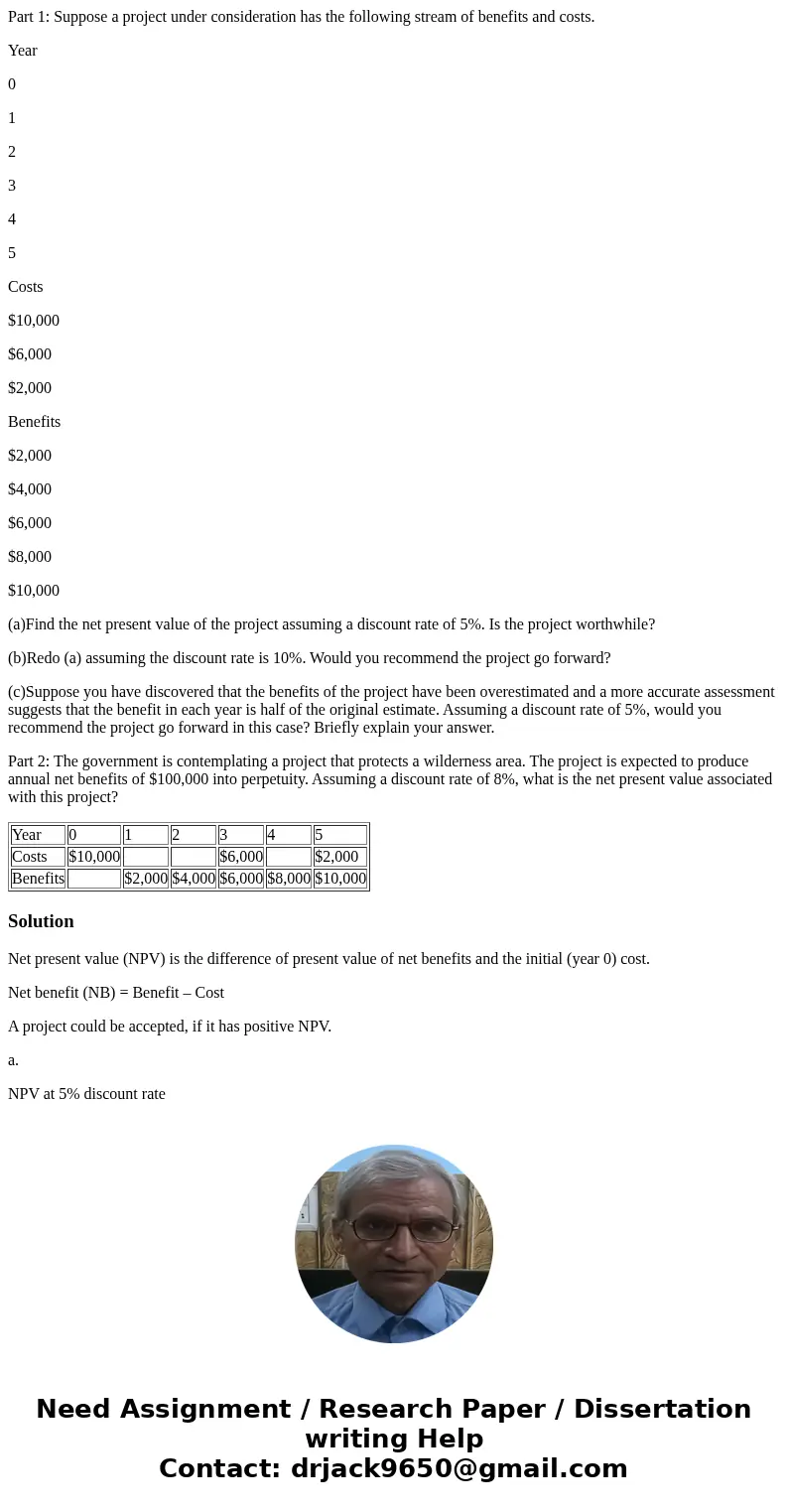

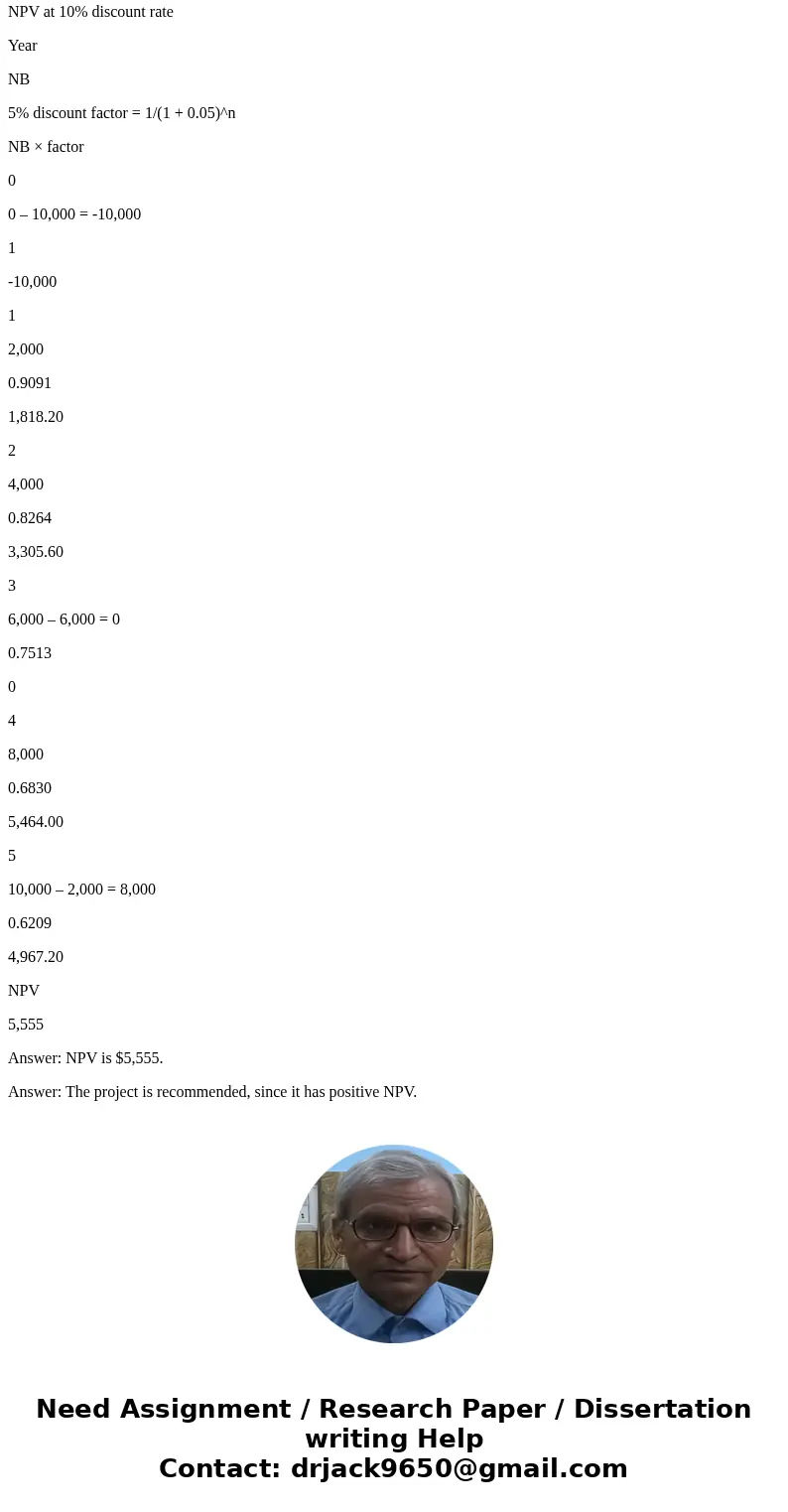
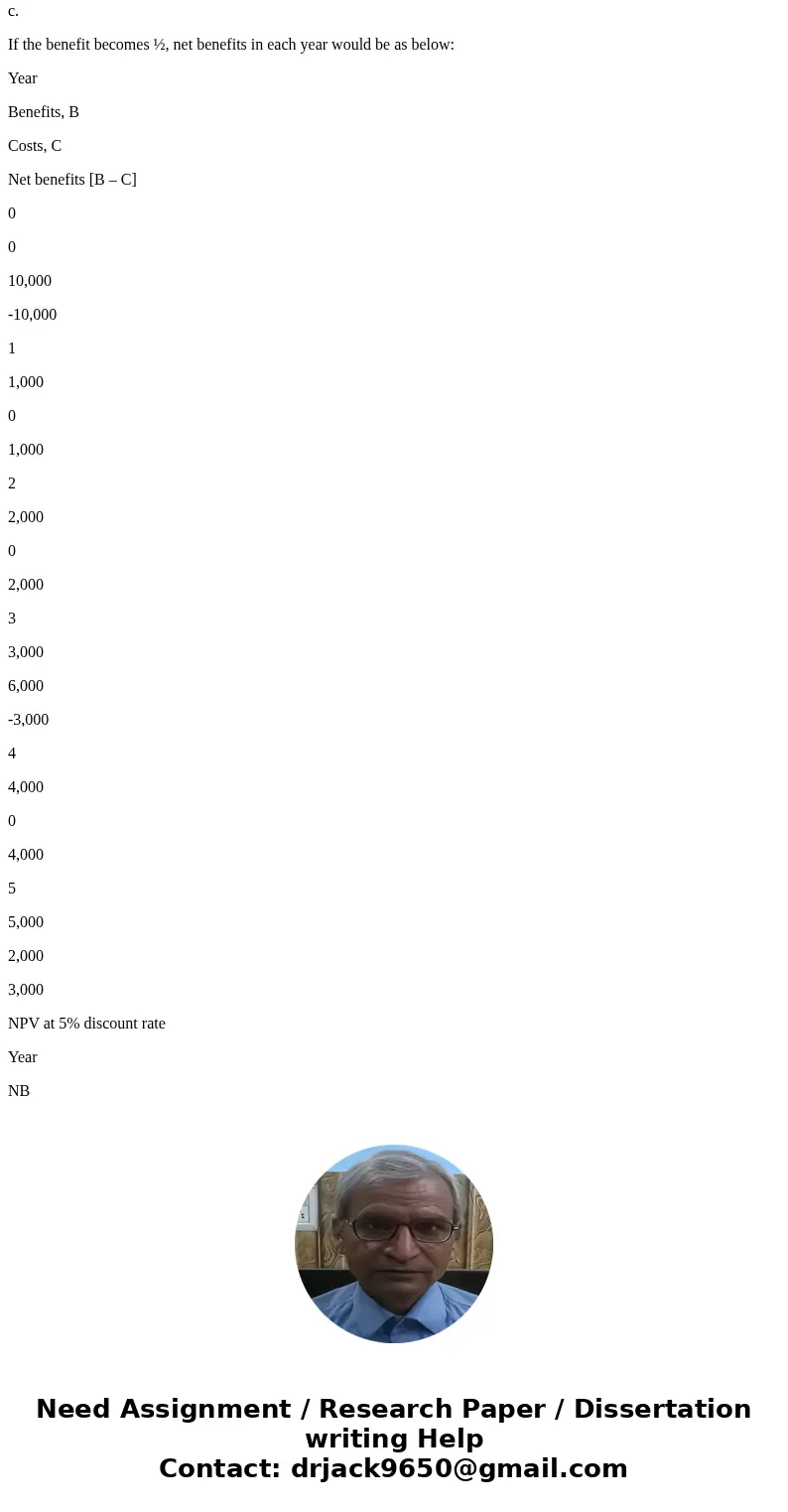
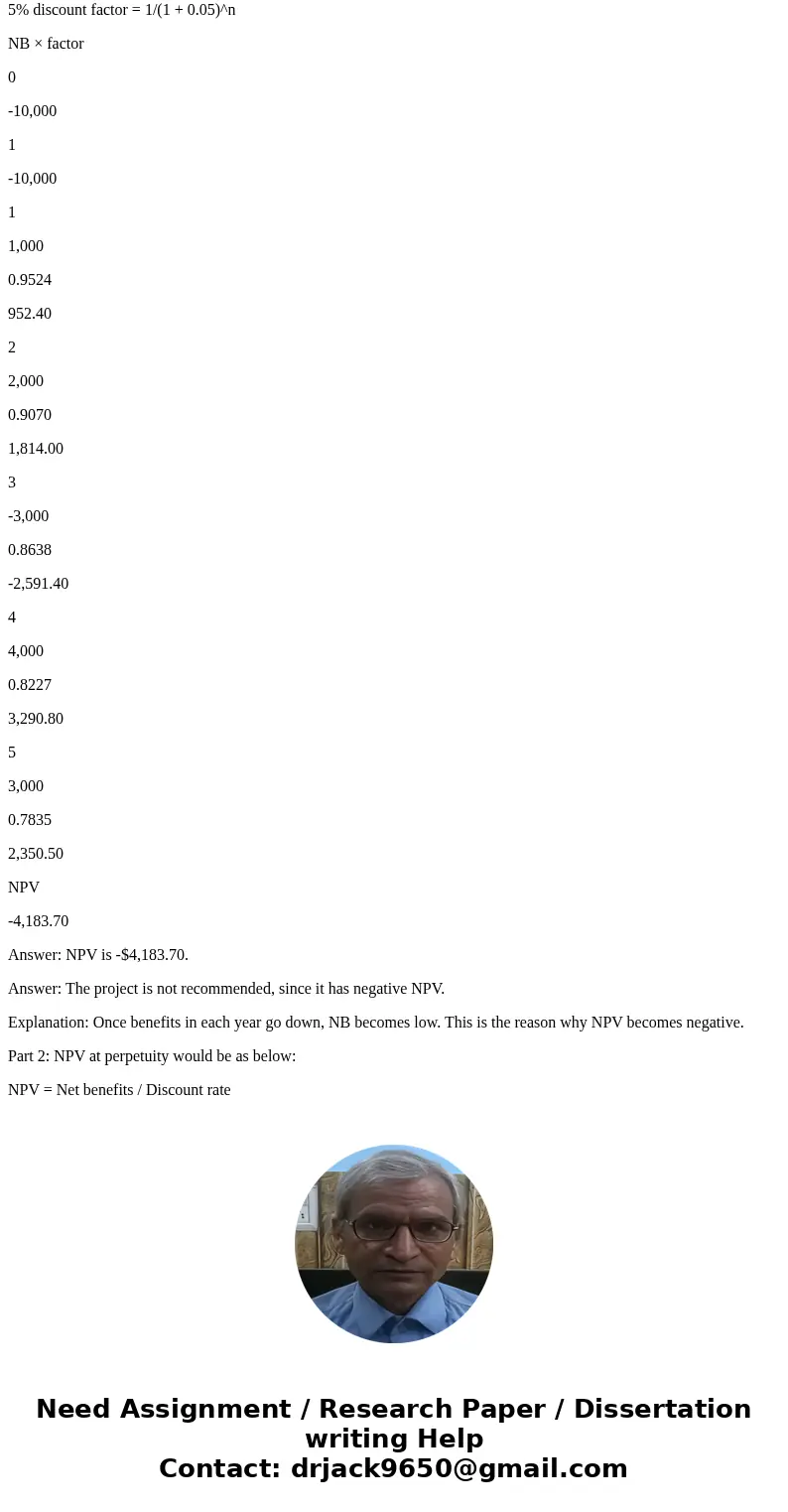
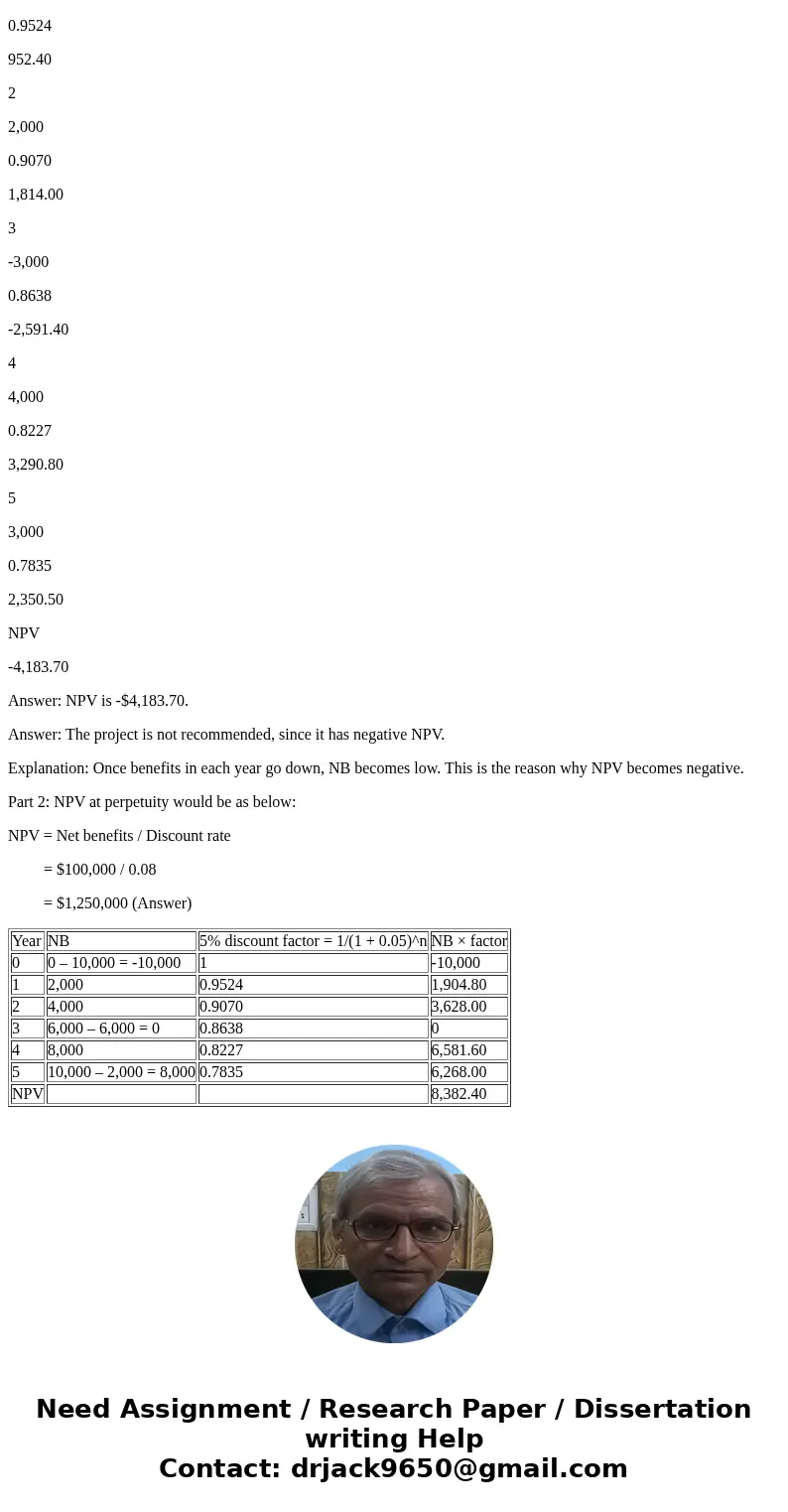
 Homework Sourse
Homework Sourse